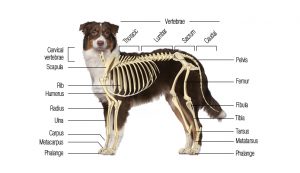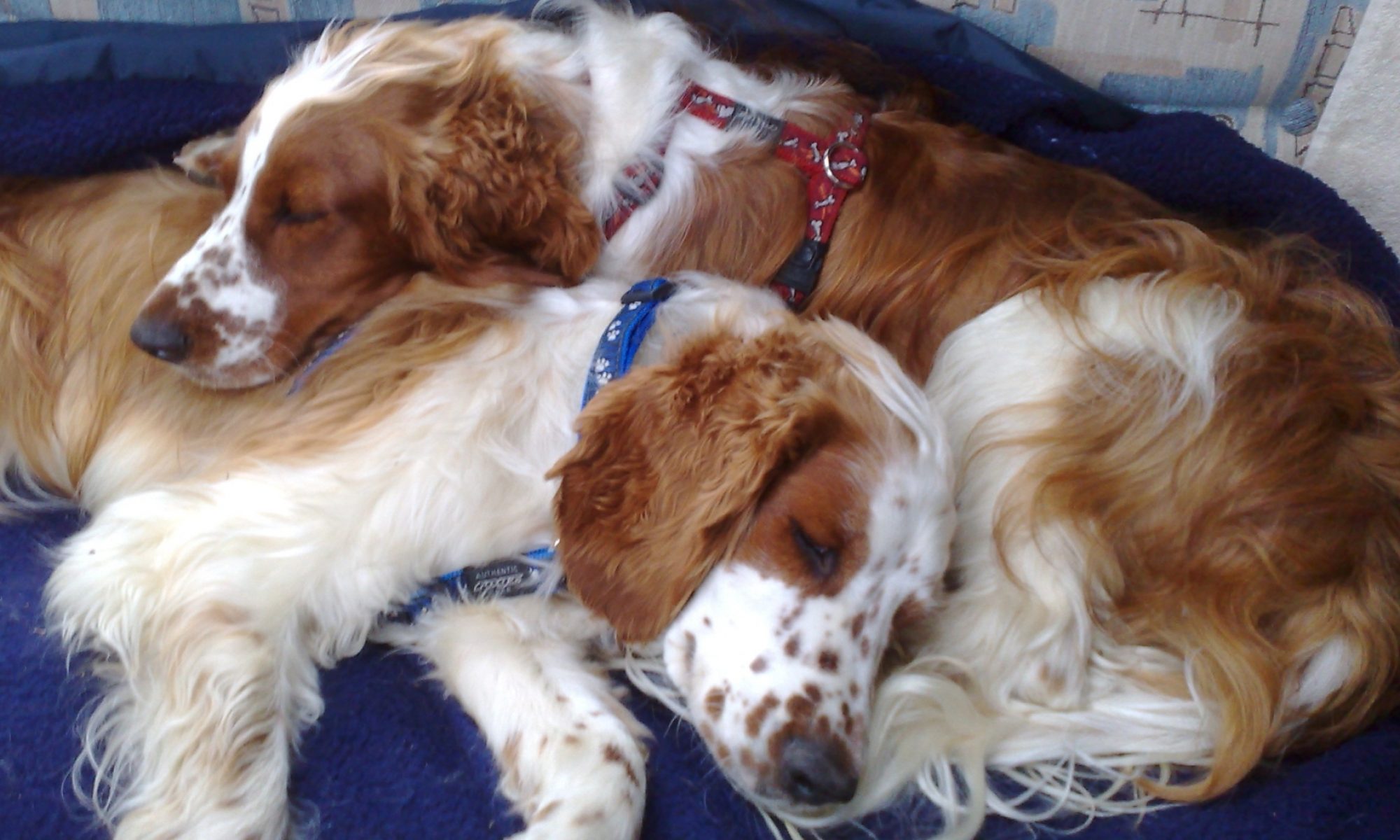The Canine Skeleton

The canine skeleton is made of between 319 and 321 bones – males have an extra bone in the penis, and the number of tailbones varies from breed to breed.
Taking the average of 320 bones, these are divided into 3 skeletal subunits:
186 bones in the Appendicular skeleton (the bones of the limbs) – this includes the penile bone.
134 bones in the Axial skeleton – the bones of the skull, spine, ribs and sternum.
The Visceral skeleton also contains bones that form part of an organ such as the middle ear ossicles).
Bones can also be divided according to shape:
Long bones, which are found in the limbs.
Short bones, which are confined to the wrist (carpus, metacarpus) and ankle (tarsus, metatarsus) regions.
Sesamoid bones, which are present near free moving joints such as the wrist and knee (stifle).
Flat bones, which are found in the pelvis (where they provide for the attachment of muscles and long bones) and in the head (where they surround and protect the eye, ear, sinuses and brain).
Irregular bones, which are found in the vertebral column, three parts of the hip bone, and include all bones of the skull that are not of the flat type.
The main function of bones are to:
Provide a framework to support the body and protect the soft organs of the body
Provide a system of levers used in locomotion (muscular action)
Produce red blood cells (hematopoiesis) and several kinds of white blood cells. In the normal adult dog they also store fat.
Marrow is contained within the hollow centre shaft of the bone (medullary cavity). Marrow is yellow when it is mainly made up of fat, and it is red where red and white blood cells are produced. Red marrow is present in certain bones such as the leg (femur), upper arm (humerus), pelvis (ilium) and ribs.
Act as a store for calcium and phosphorus, and many other elements.
-
The periosteum is a fibrous membrane that covers the outside of the bone. This membrane is rich in capillaries (small blood vessels), and is responsible for nourishing the bone.
The firm dense outer layer of bone is called cortical bone, and makes up 80% of the skeletal bone mass. It assumes much of the weight bearing of the body. The inner spongy structure is cancellous bone – this has a structure that resembles honeycomb and makes up 20% of the bone mass. This spongy mesh-like bone is specially designed for strength (similar to steel rods that are buried with concrete).
